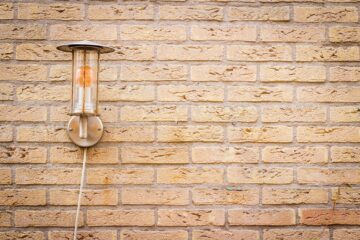Introduction
How many coats will it take to paint the wall?
This is one question that most contractors, as well as DIY painters, keep on posing. In a nutshell, the number of coats of paints that one chooses to cover a wall depends on a number of factors. These factors include the weather you’re covering dark or light, colour, quality of the paint you use, as well as the type of surface you’re painting. Otherwise, two are the most acceptable coats that you should use whenever you want to cover your wall.
We cannot deny that it will cost you a fortune to apply two or more coats on your wall. The good thing is that the more the coats the longer the stay. Studies show that walls with two or more coats are most likely going to stay between 3 and 5 times longer. However, this is not always the case since it depends on the quality of the paint.
Complementary to this, there is a special occasion where one coat will fit perfectly on your wall. This is can be true in a situation where top-notch quality paints are used. Similarly, the number of coats used in covering the wall to a greater percentage will depend on if you’re covering dark or light.
Here, the coating can follow the following procedures:
- Dark to light
- Light to dark
- Light to light
- Dark to dark
Best Practices in Understanding The Number of Coats Needed To Cover a Wall
Whenever you’re talking about a new wall, it’s vital to follow the thumb rule and apply two coats of paint after primer. A similar thing can be said if you want to paint drywall. The rules will change slightly if you want to repaint your wall. In most cases, you’ll be expected to apply only one coat if the paint that’s being use has the same colour and its quality is not questioned.
Caution:
Cover your tools as well as the paint to prevent them from drying.
Covering The Same Color
You’re advised to apply one coat of paint if you’re using one colour. Here, more caution needs to be taken since it’s easier to fail in identifying similar colours. This, however, doesn’t mean that you cannot do a two-layer coating. In fact, this is more recommended because the old coat may have faded over time because of several factors.
Covering Light Over Dark and Light Over Dark
In a situation where you’re supposed to cover dark over light and vice versa, at least two coats of paint will be necessary. Under normal circumstances, you should do what can be described as a sample spot to see if you’re going to need three coats or just one coat of primer and two coats of paint. Remember-there are specific instances where you’ll apply a few coats of paint but still feel like the old colour pollutes the new coat.
How Many Coats of Paint to Cover Your Exterior?
The number of coats for exterior surfaces follows stringent recommendations since it’s exposed to various elements. If it’s being recommended that you should use two coats of paint on an interior surface, then undoubtedly, your exterior will have at least two coats because of the above-stated reasons. There’s no short cut in this unless you want to end up with a horrible result. Among the mistakes that are witnessed when painting the exterior surfaces include:
- Failure to use enough coats
- Not adequately preparing the surface by pressure washing, cleaning, as well as priming
- All these mistakes have proved costly in the longest run.
The Reasons Why Some Surfaces Take More Coats Than Others
No secret that poor quality paints will not produce a fine result as higher quality paints. It’s from this that most people spend all day adding coats and waiting for them to dry not knowing that the quality of their paint is one biggest challenge. Higher-quality paint comes with the following features:
- Have better pigments as well as resins
- Contains fewer solvents such as water, a reason paint is thicker
When deciding to go for oranges, yellows, and many other paints that are mostly described as hard to paint, it’s recommended to apply an in-depth tint primer that will help in getting the hard to include colours to dry in at least three coats. In general, apply the primer and give it time to dry. Allowing between 4 and 5 hours will be the best idea, and this process is needed to prevent the peeling of the coat. Go for mid-tone, red, as well as bases if you need to cover your paint using fewer coats.
Benefits of Applying at Least Two Coats on Your Wall
- It will give your paint a gorgeous look. Using fewer coats will not only make your paint to peel sooner but will also leave an uneven finish that will allow the old coat to destroy the attraction of a new finish.
- Having at least two coats of paint will give your paint a longer lifespan than when one coat was used. With a more durable coat of paint, you can be sure that you’re going to spend less money on renovation in the long run.
- You’re guarantee of a longer warranty.
Why it’s Always Good To Acquire The Services of a Professional Painter
While it may be true that painting can be done by any person regardless of the level of experience, involving professional painters will probably result in a better finish. Talking to an experienced painting expert is often the best option if you want to end up with the best result. Contrary to many beliefs, the overall success of a painting is not a matter of walking into a leading shop and purchasing all the necessary painting items. Hiring a painter is the best bet that will save the hassle that comes with the entire process of painting.
Bottom Line
There are no specific numbers of coats that are needed to cover your wall. In deciding on the number of coats to use, there is a number of factors that will come into play. It’s therefore; good to choose coats that will give your wall much-needed beauty.


